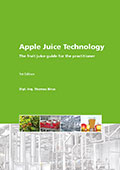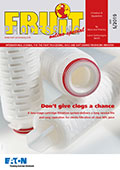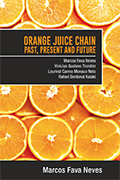From dating through apps and online shopping to working from home, it seems Millennials prefer to do nearly everything from the comfort of their couch—and now socializing is best done from home for this generation, as well. New research from Mintel reveals that almost three in ten (28 %) Younger Millennials (aged 24-31) drink at home because they believe ‘it takes too much effort to go out.’
But while going out is proving to be too much effort for young Americans, the country’s older consumers are willing to make the time as just 15 % of Baby Boomers (aged 54-72) agree it takes too much effort to drink away from home.
Overall, more than half (55 %) of American consumers prefer drinking at home. In fact, it seems the at-home drinking trend is catching on as on-premise alcohol drinkers are more likely to say they are drinking alcoholic beverages away from home less often (18 %) in 2018 than they did a year ago, than to say they are drinking away from home more often (15 %), with Younger Millennials most likely to agree (29 % drinking away from home less vs 17 % more). In addition to being perceived as more relaxing (74 %), cheaper (69 %) and personal (35 %), nearly two in five (38 %) in-home drinkers are choosing to drink at home in order to better control their alcohol intake.
“While Americans enjoy going out for a drink now and then, our research shows that the majority of consumers say they prefer drinking at home. Today, Millennials are currently leading the way when it comes to socializing in the home, but the preference for at-home drinking will likely be even greater among the up-and-coming iGeneration, who are generally regarded as more frugal and pragmatic than Millennials. Bars and restaurants must work harder than ever to provide customers with a unique drinking experience. For example, an ‘Instagramable’ pop culture pop-up bar offers an experience that can’t be replicated from consumers’ living rooms,” said Caleb Bryant, Senior Foodservice Analyst at Mintel.
Premiumization boosts sales; wine grows on menus
On-premise alcohol sales continue to rise, reaching an estimated $108 billion in 2017. But it seems less is more for consumers when it comes to ‘trading up’ for pricier drinks as on-premise alcohol volume consumption has fallen year-over-year. On-premise alcohol consumption is estimated to fall to 17.8 liters per capita in 2017, compared to an average of 20.9 liters in 2010, according to Mintel Market Sizes.
Where consumers are drinking is also changing as traditional bars have seen a drop in visitation. Overall, those who drink alcoholic beverages away from home are more likely to say they’re visiting drink-focused venues less often compared to a year ago. This includes bars in general (20 % less vs 10 % more), nightclubs (17 % less vs 7 % more) and sports bars (17 % less vs 10 % more).
Meanwhile, venues that offer more unique experiences are winning over consumers as many who drink away from home say they are visiting breweries (19 %), entertainment venues (14 %) and independent restaurants (13 %) more often in 2018. What’s more, trying out new drinks (49 %) is the number one reason why those who are drinking away from home more often say they are doing so and 22 % agree that more bars should offer activities such as trivia and darts.
Restaurants and bars are helping consumers get more adventurous with their drink choices through new, innovative offerings. According to Mintel Menu Insights, the amount of cocktails on menus across the US increased 15 % between Q4 2015-Q4 2017, with wine in particular presenting an opportunity as a versatile cocktail ingredient. Wine is by far and away the most common alcoholic beverage on menus, representing 39 % of all alcoholic beverages offered on menus today, and is now more often being used in cocktails. In fact, the inclusion of wine in cocktails showed the strongest growth of any alcohol type in the last two years, growing 20 % between Q4 2015-Q4 2017.
“Despite falling volume consumption, total on-premise alcohol sales are rising, indicating that while consumers are drinking less, they are trading up for more expensive drinks. Our research shows that consumers are ordering imported and craft beer over light beer, and premium spirits are growing more popular than value spirits. Looking ahead, drink variety will build consumer excitement at bars and restaurants, while currently trendy drinks such as sparkling wine and rosé will continue to be a popular option for both special and casual drinking occasions. Millennials enjoy experimenting with new drinks on-premise, with this adventurous behavior indicating an opportunity for foodservice retailers to innovate their drink menus and create better experiences to further encourage consumers to drink more away from home,” concluded Bryant.









